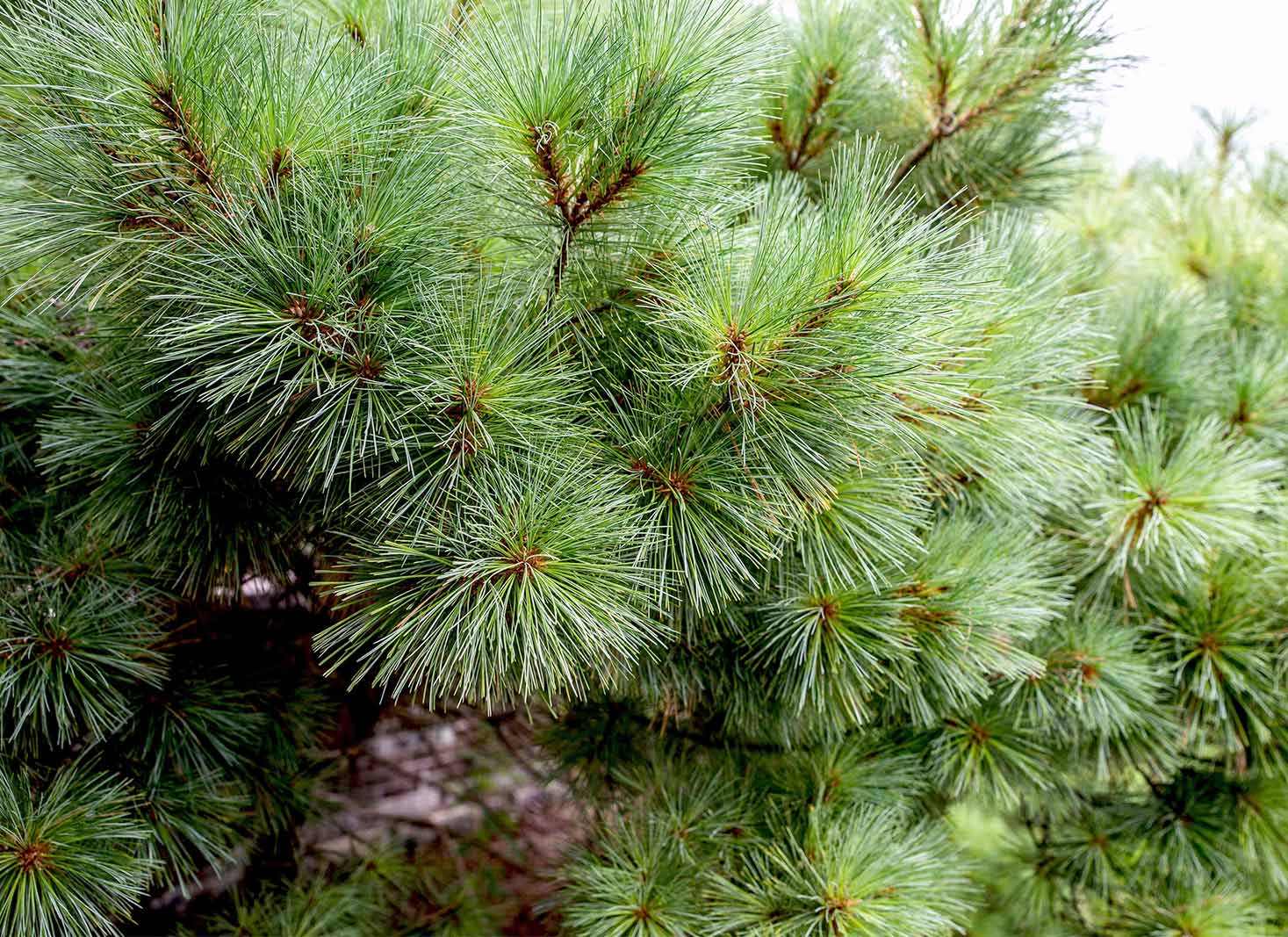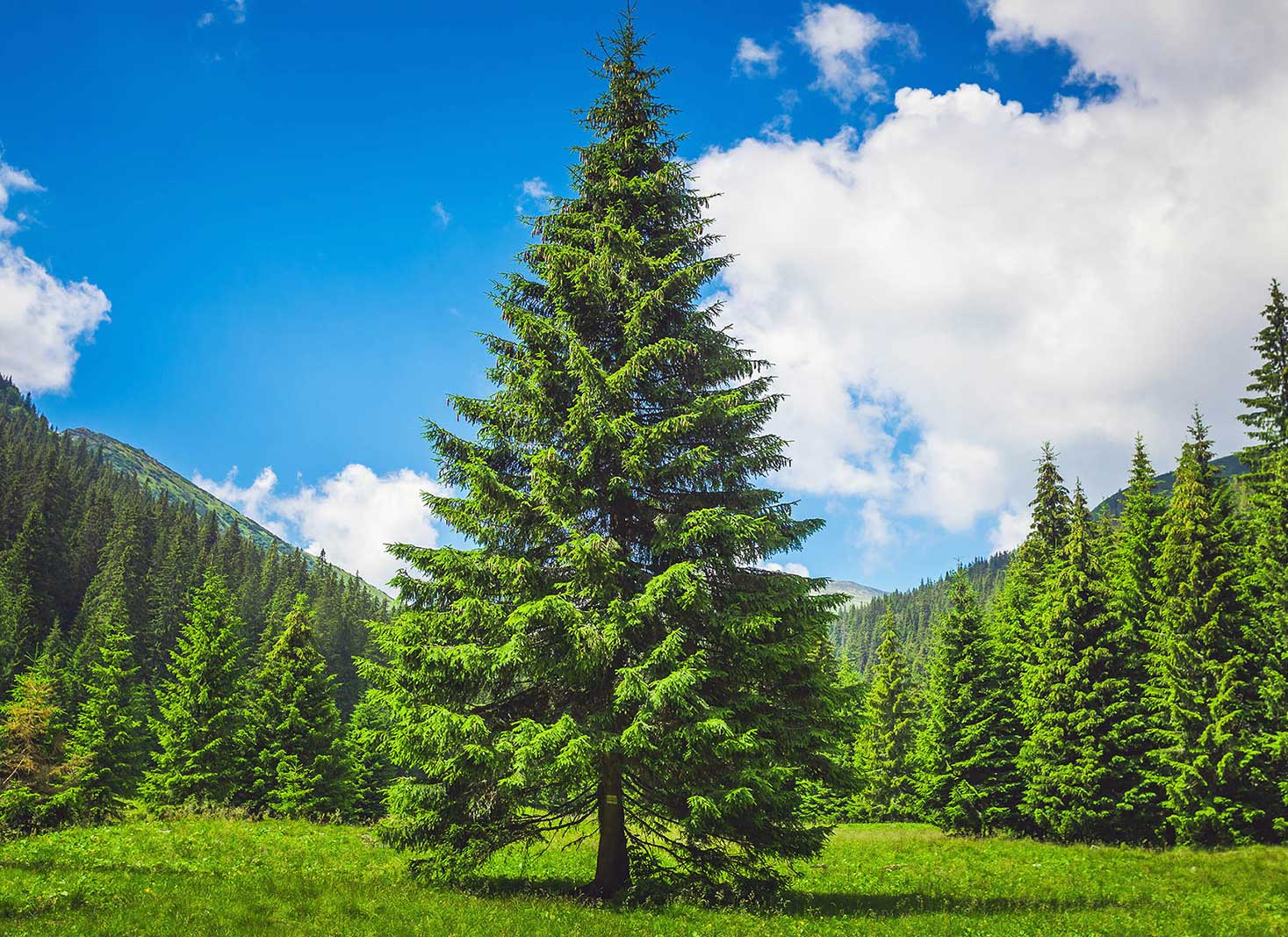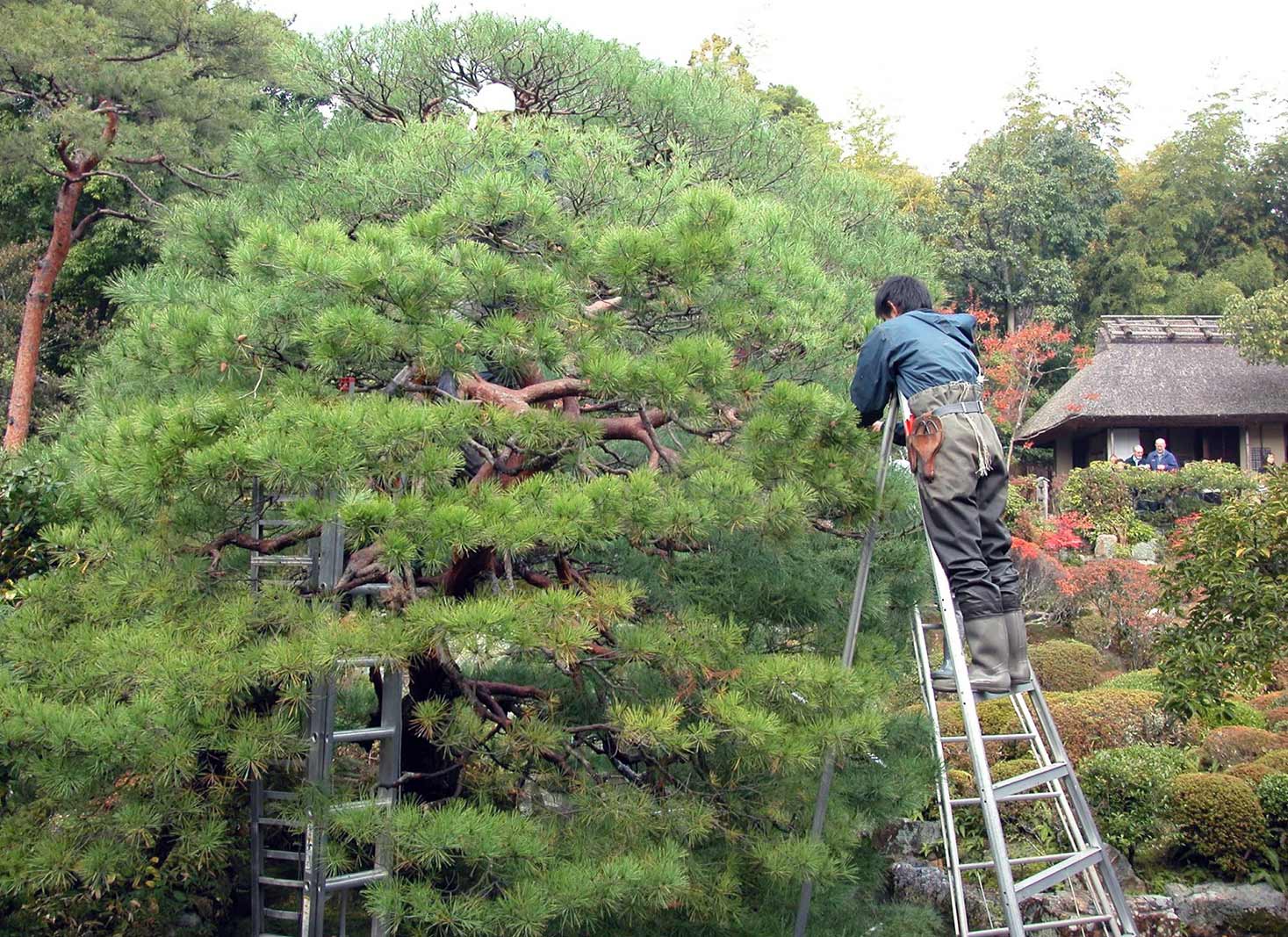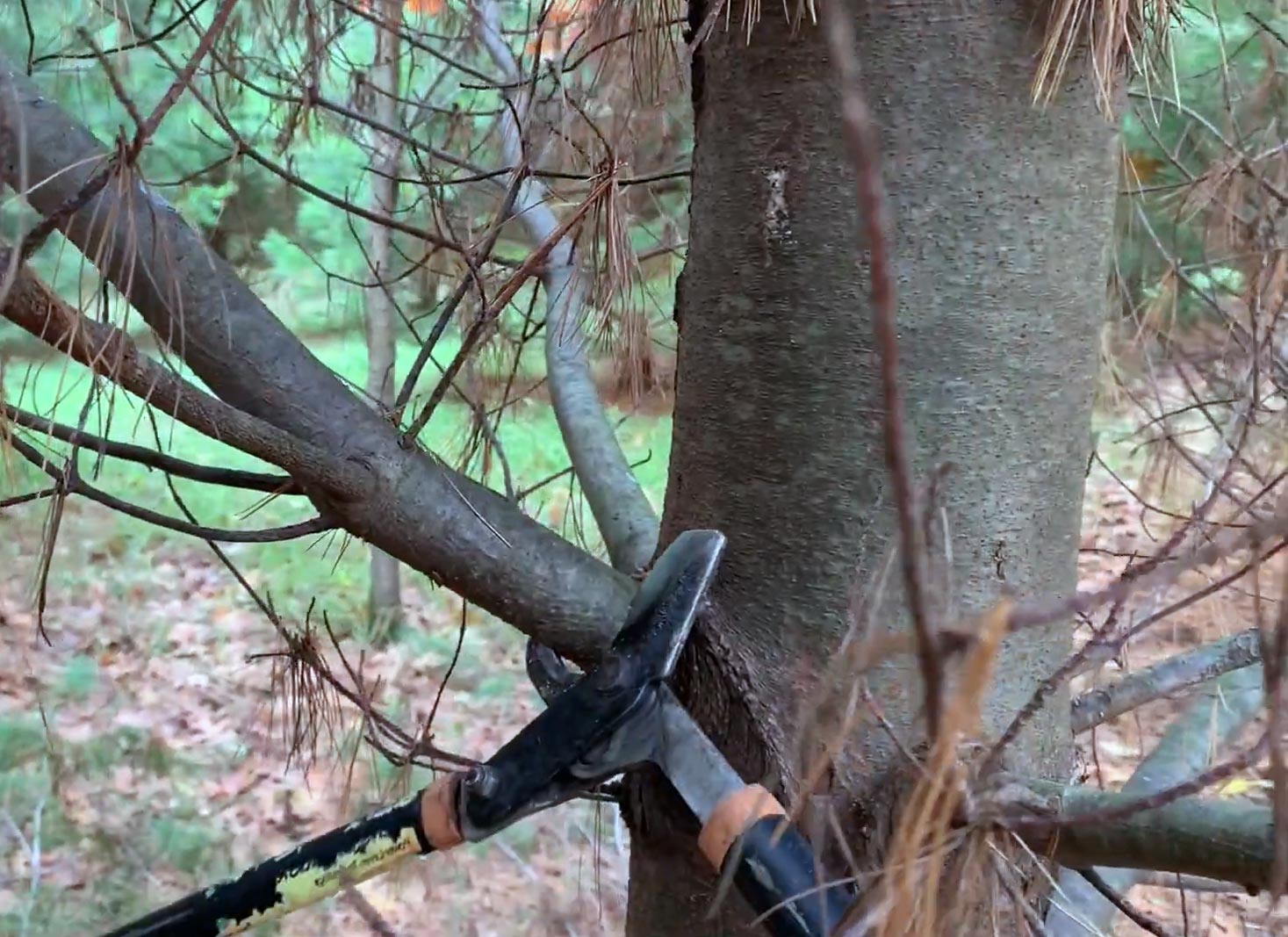Nurturing and caring for pine trees involves mastering the practice of “pruning a pine tree”, an activity that is both simple yet significant to sustaining their growth, health and attractiveness.
In pruning pine trees, timing is essential to ensure the best results. Proper care after pruning involves monitoring health, providing water/fertilization & controlling pests/diseases.
With this helpful guide, you can now access all the resources needed to become well-versed in pruning your pines with assurance that it will benefit them long term.

The health and aesthetic of pine trees are significantly impacted by pruning, which involves the removal of any damaged or diseased branches. This regulates growth while preserving their natural form.
It is absolutely essential to understand why we should be pruning as well as when this needs to take place so that these tree species remain healthy and attractive all year round.
Reasons to prune
We may wonder why it is important to prune pine trees. For starters, trimming branches assists in keeping the growth of a tree at its optimal rate and preserving its desired shape.
Also, diseased or broken limbs need to be removed promptly for optimum health as well as safety purposes for those around the tree too.
Pine trees have special ‘candles’ which are essentially new spring growths so timing their pruning correctly goes a long way towards managing height control and ultimately shaping them accordingly.
Timing is key
When it comes to trimming pine trees, the ideal moment for doing so is while they are actively budding. It’s a practice known as candling, where tips of new growth – noticeable when shoots reach around four- to six inches in length – can be snipped off during springtime.
Pruning later on in the season should be a good idea. Be avoided because any wounds won’t have enough time to heal before winter sets in and there could also be an increased possibility that pests will find refuge in colder months.
Knowing when exactly to prune your pines correctly ensures their health and healthy development going forward.
Pruning techniques for pine trees
Different methods are available that can be used in order to achieve a desirable result, including candling branches, removing broken or damaged ones, and preventive maintenance practices.
Knowing when and how each technique should be used helps guarantee optimal results from your pruning efforts on these evergreen plants. Doing so can help prevent future problems while ensuring aesthetics.
This includes understanding how much of its structure you may want to cut away without damaging vital components like healthy new branch tips along with any deadwood present near them too.
Candling method
In spring, pruning a pine tree using the candling method involves snipping off its new growth tips for forming and maintaining compactness. This process was given such a name due to the resemblance of those shoots to candles.
It is ideal that these needles are cut when their size hasn’t reached half of an adult needle’s length on this plant yet.
To ensure achieving dense results in formulating your desired shape with care, manually break away from only new additions instead of trimming into any wooden parts connected to the branch area or above it.
Removing damaged branches
Removing damaged, unhealthy, or dying branches from a tree is very important to ensure the safety of it and its surroundings. Signs like discoloration, wilting, or pests are indications that something could be wrong with certain limbs.
Smaller limbs can simply be cut back using either hand pruners or a saw up until an outward-facing node spot where other crossing branches have come out in their stead.
For larger sections of branchage which will require heavier handling than usual, utilizing the three-cut method should prove beneficial. This would make taking off bigger parts easier without risking stripping bark off your pine altogether.
Preventive pruning
The pruning technique of preventive maintenance is used to ensure good tree health and to avoid any potential difficulties with the trees.
Through this form of pruning, sick, broken or dead branches can be removed before they cause serious issues.
Thus enabling the pine tree’s desired shape and avoiding the pine tree’s undesirable shape. Problems down the line.
Maintaining a regular check on your mature or young trees will help keep them healthy in appearance. You will also be able to tackle unwanted growths quickly thereby maximizing its overall healthiness for an extended period of time.
Pine tree care after pruning

After pruning, it is essential to take proper care of your pine tree in order for it to remain healthy and continue growing.
To ensure that the majestic appearance remains intact, regular maintenance should be implemented, which involves monitoring its health, providing appropriate water and fertilization levels as well as controlling any diseases or pests.
Checking for signs of ill health from time to time can help keep track of how the tree is doing while providing enough hydration plus nutrients through a suitable fertilizer program will aid its growth and sustainability.
Monitoring health
When examining a pine tree, indicators of good health consist of strong needles in lush condition and the trunk encased with thick bark. After pruning is completed, it’s important to keep an eye on its progress.
Be looking for evidence that new growth has started or illnesses/pests have appeared.
By monitoring this regularly you can make sure the robustness remains intact at all times, any difficulties will then become visible quickly before they worsen further.
If disease or infestation is discovered, seeking professional advice from an arborist would likely be beneficial as they possess expertise that could save a fading tree’s life – or establish if removal should take place due to safety reasons.
Watering and fertilizing
Watering and fertilizing are key components in sustaining the health of your pine tree. It is suggested to douse its soil weekly when there is a dry winter or an extended drought period for adequate moisture supply.
Proper soaking assists a lot with promoting strong growth and keeping it lively throughout its life cycle.
Fertilizer should be given once every year, either during late fall or early springtime, so that necessary nutrients can be imparted upon the pine tree.
Pest and disease control
Properly taking care of your pine trees is an important factor in protecting them from various pests and diseases, like canker disease, rusts, bark beetles, soft rot blight and root rot.
By providing the right amount of water and fertilizer to your tree as well as timely pruning, it will help keep its health strong which can reduce these issues drastically.
Keeping your pine tree healthy is key to avoiding disease. Difficulties that might come up with nature’s forces.
Safety precautions when pruning pine trees

Taking care of pine trees while pruning requires special attention to safety measures for both the tree and any individual involved.
By following certain rules with ladders, and gardening tools, and also controlling falling branches, it is possible to ensure a risk-free atmosphere when tending these trees.
Ensuring one’s well-being as well as safeguarding the health of the pine will be done by taking proper precautions in this process.
Working with ladders
When cutting a pine tree, it is important to work with ladders in the safest and most efficient way possible. Fasten the ladder at its top firmly onto the tree for access above where you need to trim branches.
Make sure that your ladder extends at least 3 feet past any branch before pruning it. Also don’t forget about personal protective equipment (PPE).
Before beginning this project, evaluate potential risks such as electric lines or having proper techniques for falling safely away from danger zones. Ensure also that there is an escape plan when taking down trees entirely.
Using gardening tools
The most suitable instruments to use when trimming pine trees would be loppers and a reciprocating saw with a specialized blade made for that purpose.
To operate it, firmly grasp the handles ensuring they match up correctly with the branch. Cut off at 45 degrees above any bud or other part of the tree limb then step away from the area in case anything moves around while working.
Using a reciprocating saw is also a perfect way to tackle branches which cannot easily fit inside those mentioned earlier (lopper).
This time make sure blades stay securely connected as you set your device on the lowest speed possible before engaging in the cutting process.
Controlling falling branches
When pruning a pine tree, protecting against the potential harm from falling branches is key. To safeguard property and individuals below the tree, it is essential to clear any debris in that area beforehand.
Utilizing ropes or strings to contain loosened branches can be extremely useful during this process.
Constructing your own rope pulley using the trunk of another steady nearby tree as well as an extra length of rope for leverage allows you to control dropping pieces properly.
Taking these steps will guarantee successful pruning results with no injuries sustained.
Deciding when to remove a pine tree

Considering whether to keep or remove a pine tree is an essential decision that must be thought about carefully.
Certain elements such as the health of the whole tree, damage to the trunk and roots plus inclined trees should all be considered when taking this step.
Looking into the future. These considerations can make it easier for you to decide if saving your pine tree is plausible or if removal might just be necessary.
Assessing tree health
Assessing the general well-being of a pine tree is essential in deciding whether it should be cut down or saved.
One of the signs that a tree is healthy is when its needles are green, having an imposing trunk and abundant layers of bark encasing all sides with no notable indication of distress.
If your particular specimen exhibits severe signs of detriment, then seeking professional advice from an arborist can verify if restoration to health is possible and decide if removal is necessary due to potential risks.
Trunk and root damage
Symptoms of trunk harm may include striped trunks, cracked branches, and missing bark while damage to the roots could appear as light green or pale foliage, prematurely discolored leaves, plus darkened patches.
Wilting or yellowish needles might also demonstrate signs of injury to its roots.
In order to determine how severe any destruction is, assess both how much it has spread over different areas, plus how many affected branches are affected by it.
If there’s widespread devastation that impacts several limbs, then potentially cutting down this particular pine would need careful consideration. If only minimal damage can be detected, attentive care + management might aid.
Leaning trees
A leaning pine tree can present a dangerous situation and should be taken down if it poses a danger to people or property.
Signs that the tree may have been shifted from its vertical axis include exposed roots around the base, and heaving of soil close to it. To point towards an area with plenty of foot traffic.
If its lean is more than 15%, there’s an increased risk of falling, making removal necessary.
When not overly off-center and situated away from pathways often used by individuals. Pruning might help reduce this displacement while preserving the overall healthiness of the pine tree at hand.
FAQ's
For optimal results, pine trees should be pruned in late winter or early spring before new lush growth starts. This gives the most amount of time for new growth to help conceal pruning cuts.
If necessary, trimming off diseased or dead branches can be done any time of year to protect the tree.
During the spring season, it is important to trim new growth tips of a pine tree – or candles as they are often called, by pinching them off in the middle with your hands rather than using shearing tools that can cause needles to turn brown.
Be sure not to over-trim branches, since this may result in damage to the tree itself. Always keep an eye on how much you clip away from its foliage.
Too much pruning will prevent any more fresh growth and adversely impact the overall health of your beloved pine!
For an optimal pine tree, it is suggested to prune the lower branches which can give more room underneath while enhancing its health.
Care and advice from forestry specialists should be taken into consideration when cutting back the bottom third of the crown without injury to the tree itself.
This process may help maintain a healthy state for this type of evergreen coniferous plant.
During the winter, it’s best to prune specific branches on a pine tree in order to control its size and growth rather than topping it.
Topping can have detrimental effects by taking away from its shape and health while also leading to internal decay or infestation of insects as well as diseases.
Keeping this method intact helps maintain the overall integrity of these trees for years moving forward.
When it comes to trimming a pine tree, pruning the candles should be done in spring when they are still half the size of more mature needles. Cut them back as desired and new growth will appear beneath the cut during that time.
Be cautious while cutting since going too deep may lead to the browning of those same needles.
It is important to bear in mind that prune your pine at this stage – once its needles have reached their smallest length – since excessive trimming can cause needle discoloration and kill off branches if not performed carefully with precision.



